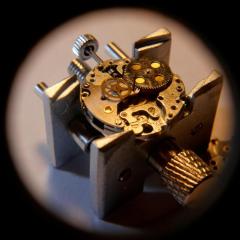Really Stuck Waterproof Case Back
-
Recently Browsing
- No registered users viewing this page.
-
Topics
-
Posts
-
By RichardHarris123 · Posted
No not baby photos, teens to early 30s. With the bike about 20, graduation about 30. -
This is wrong. We have been talking about the regulator pins because conventionally the regulator is two pins, or a pin and a boot. The Etachron regulator is one round pin with a wide slot down the middle for the hairspring to sit in. To regulate, the pin is rotated anticlockwise (viewed from above) which brings the rear inner and front outer corners of the slot equally closer to the spring. You can download a document with detailed instructions here: https://calibercorner.com/etachron/ Can you please post some photos to show what you mean by "flatten the spring"?
-
Than you so much for taking the time to write such a detailed and informative post. It really helps. So, another question: With the Etachron system the stud pushes into the carrier but the angle on the vertical plane of the stud is based on the carrier arm. I expected it to be flat but I have seen some movements where it is bent slight down meaning the stud is pointing slightly inward at the bottom and the spring leaving the stud is affected. Is this something that is done at the factory to flatten the spring? I played around with manipulating the spring vertical angle as it leaves the stud and it has a significant effect on how it goes through the pins and also the angle of the coils on the other side of the balance. I can flatten the spring by adjusting the angle it leaves the stud. Now I know the NH35 is a mass produced movement so not the best quality but is the stud vertical angle ever manipulated to flatten the spring?
-
Because the water is very hard with calcium where I live, and I saw that on a youtube demo 🤔... Maybe it's unnecessary...
-






Recommended Posts